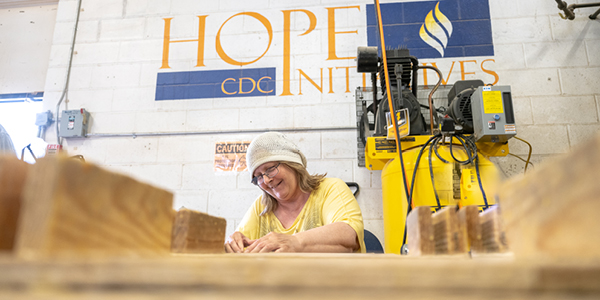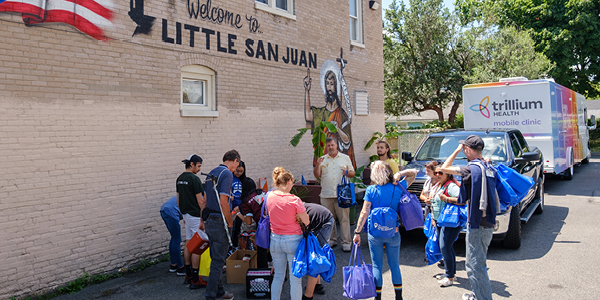New Social Innovation Grants Turn Ideas Into Reality
If substance abuse has derailed your life, help can find its way to you when outreach workers with the Father Laurence Tracy Advocacy Center meet you on the street.
If you’re going to be released from jail but don’t have a place to live, getting a job might not be the highest priority. Figuring out the basics of housing, food, and transportation is just part of the HOPE Works project, developed by Hope Initiatives CDC.
In July 2021, these two grassroots organizations serving Black, Indigenous and People of Color (BIPOC) each received a $50,000 “social innovation” grant for creative and nontraditional approaches to address academic achievement, racial equity, or poverty.
“Fortunately, RACF was willing to invest in new ideas,” said V. Dale Sedgwick, CEO of Hope Initiatives. “(The grant) literally helped us to take something from a concept and make it real.”
“This grant validated what we have been saying all along and what we’re delivering every day, and that is that we are the masters of street outreach and we have a beautiful relationship with the streets,” said Rudy Rivera, former CEO of the Advocacy Center.
A year later, the organizations are assessing lessons learned.
Placing Hope in Successful Transitions
HOPE Works is a 12-week program for people coming out of jail, receiving county assistance, or who are between the ages of 18 and 24 and at risk for gun violence.
For those returning to the community, making the connection ahead of time is key. “Ideally, by meeting with them before they get released, you’re beginning to develop some trust and some relationship with them,” said Sedgwick. “So that there’s a higher likelihood that they will actually come and participate in the program when they get out versus yielding to temptations to do other things.”
The program focuses on job readiness, physical and behavioral job skills, how to look for and keep a job, and the tools to help them live in society on society’s terms and meet an employer’s general expectations.
A six-month pilot launched in March 2022 with the goal of expanding the number of participants in September. As of July, 16 people were enrolled. Of the three who had been interviewed by local businesses, two received job offers. For those who became employed, HOPE Works plans to stay in touch for 24 months to support job retention and development of life skills.

But only about 25 percent of people who have been referred to the program by the Monroe County Department of Human Services and the Monroe County Sheriff’s Office have enrolled. “It’s easy to get distracted and easy to get lost,” Sedgwick said. “We are scratching our heads in terms of how do we minimize that.” The pilot phase is allowing the program to iron out those wrinkles.
Sedgwick, whose organization is located on West Broad Street just west of downtown Rochester, has been seeking grants to provide stipends for participants who’ve yet to receive any financial assistance for which they qualify.
Transportation also can be an issue, she said. “We think we’re a convenient location because you’re on the bus line. That doesn’t work for individuals who may be gang affiliated because they are at risk. And so we need to figure out different modes of transportation for individuals who can’t just safely hop on a bus.”
Outreach from the Street
Staff from the Father Tracy Advocacy Center, along with others from partner agencies, help support the physical, spiritual, and emotional health of people on the street and improve their access to social services.
“The challenge on Clinton Avenue is not about the drugs and guns and that,” Rivera said. “It’s about the human condition, and the human condition contains all those things.” Instead of waiting for people to come to the center, the outreach workers seek out those individuals.
The $50,000 grant provided resources for what Rivera called self-empowerment. “We didn’t go in with this grand idea, we’re going to solve all things now. We’re going to start with this block. And as things progress, we will continue to expand.”

Currently, teams of outreach workers walk along Clinton and Joseph avenues between Upper Falls Boulevard and Norton Street on Thursdays and Fridays. Each time they walk their usual routes, they meet about 30 people, distribute clothes, hygiene kits, information about the center, water and food — and have conversations.
Rivera monitors the quality of interactions rather than the quantity. “It’s not about randomly walking by people. It’s a very gifted art, not just ‘I walked for two hours and gave out 100 sandwiches,’ ” he said. “Do you know the people who you’re talking to? Can you empathize with their condition and have compassion for them? These are the elements that science cannot measure.”
— Patti Singer